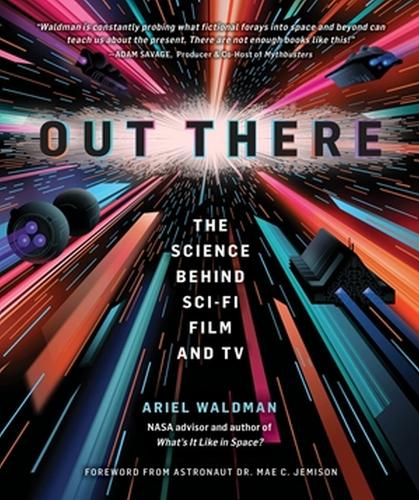
Out There: The Science Behind Sci-Fi Film and TV
(Hardback)
Publishing Details
Out There: The Science Behind Sci-Fi Film and TV
By (Author) Ariel Waldman
Running Press,U.S.
Running Press Adult
28th November 2023
United States
Classifications
General
Non Fiction
Performing arts genres: Science fiction, fantasy and horror
Film: styles and genres
Reference works
791.4366
Physical Properties
Hardback
144
Width 198mm, Height 232mm, Spine 20mm
620g
Description
Explore the science behind some of your favorite popular science fiction tropes--from escaping a black hole to riding a space elevator to the stars-in this illustrated guide from NASA advisor and host of the popular Tested podcast OffWorld.
Whether it's researching new technology, theories, or possible extraterrestrial situations, the showrunners and directors of our favorite science fiction shows and films are often extending the boundaries of real science, leaving viewers and fans to wonder, "Could this really happen" In Out There: The Science Behind Sci-Fi Film and TV, author and filmmaker Ariel Waldman dives into the fascinating real science behind some of the most beloved space-themed science fiction tropes, from faster-than-light travel to AI ships, hypersleep, and imagining life on other planets. Each chapter dives into a particular situations or scientific questions that frequently show up in science fiction pop culture. Aided by interviews with a diverse range of scientists, educators, authors, and journalists, Out There takes science fiction fans, movie geeks, and popular science lovers on a journey to the farthest depths of space, revealing how thin the gap between fiction and reality can be.Reviews
"How many of us have watched films set in space and wondered, 'What would an astrophysicist have to say about this' What a treat to have Out There on hand to be able to read exactly what an astrophysicist would have to say about a film set in space! Out There is full of charming and informative interviews with astronauts, aerospace engineers, spacesuit historians, geophysicists--every imaginable human resource a hard sci-fi fan would love to have ready access to. A truly delightful resource!"
--David J. Peterson, author of The Art of Language Invention: From Horse-Lords to Dark Elves to Sand Worms, the Words Behind World-Building
"This book is for anyone who loves science fiction but can't help sometimes asking, 'Wait, could they really do that' Filled with up-to-date summaries of where the real science is at (and where it's going), along with commentary from experts on space technology, astrophysics, aliens, and how humans would really cope out there in the great dark void, it's a fascinating resource for curious minds."
--Dr. Katie Mack, author of The End of Everything (Astrophysically Speaking)
"Waldman takes us on a delightfully extensive, obsessive's tour of the many possibilities of life off-world. And she doesn't confine herself to reality; Waldman is constantly probing what fictional forays into space and beyond can teach us about the present. There are not enough books like this!"
--Adam Savage, Producer & Co-Host of Mythbusters and New York Times bestselling author of Every Tool's a Hammer
"With her wit and boundless curiosity, Ariel Waldman is a brilliant tour guide to humanity's future in space. Best of all, she explains the real-life discoveries that might make our science fictional dreams come true."--Annalee Newitz, author of The Terraformers and Four Lost Cities: A Secret History of the Urban Age
Author Bio
Ariel Waldman creates imaginative projects that explore the world below our feet and beyond our atmosphere. She is the author of What's It Like in Space: Stories from Astronauts Who've Been There and hosted and produced the show OffWorld, which explored all things space exploration and pop culture. As an Antarctic explorer, Ariel embarks on expeditions to film life under the ice, which became the subject of her TED Talk. She is a National Geographic Explorer and a consultant to the Science & Entertainment Exchange.
Previously, Ariel has served as the advisory chair to NASA's Innovative Advanced Concepts program and the co-author of a congressionally requested National Academy of Sciences' report on the future of human spaceflight. An art school graduate who pivoted to science, she was recognized by the Obama White House as a Champion of Change in citizen science. When not in Antarctica, she lives in San Francisco.